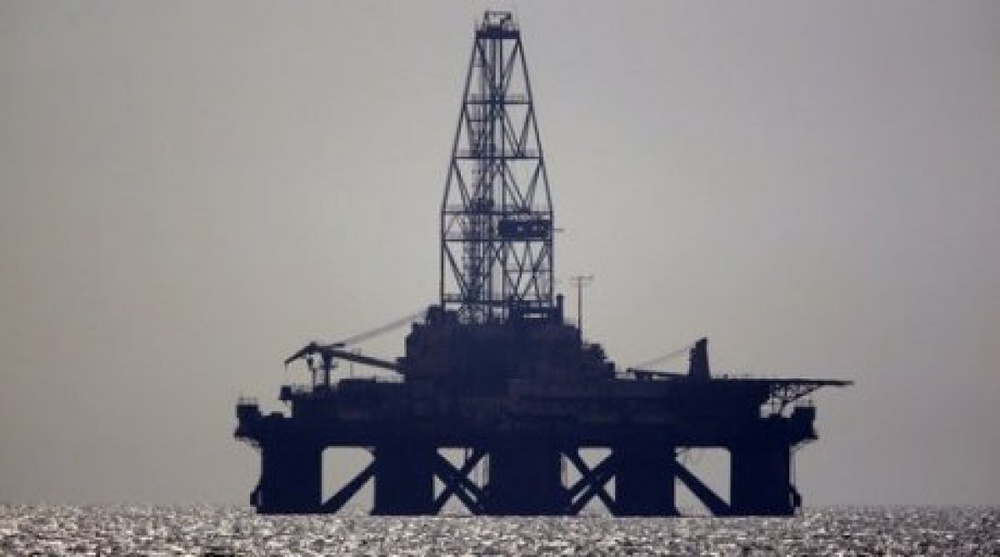
Kazakhstan plans to boost oil production output to 120 million tons a year by 2020, Newskaz.ru reports, citing the country’s PM Serik Akhmetov. “In June this year we are launching production at the giant Kashagan oilfield and plans are there to expand production at Tengiz oil field. These two measures will enable Kazakhstan to boost oil production output up to 120 million tons a year from the current 82 million tons”, Mr. Akhmetov said at the talks with Ukraine’s President Viktor Yanukovich. In 2012 Kazakhstan produced a total of 79.211 million tons, including condensed gas, 1.1% down as compared to 2011. The Kashagan field, named after a 19th century Kazakh poet from Mangistau, is located in the Kazakhstan sector of the Caspian Sea and extends over a surface area of approximately 75 kilometers by 45 kilometers. The reservoir lies some 4,200 meters below the shallow waters of the northern part of the Caspian Sea and is highly pressured (770 bar of initial pressure). The crude oil that it contains has high ‘sour gas’ content. According to Kazakhstan geologists, geological reserves of Kashagan are estimated at 4.8 billion tons of oil. According to the project’s operator, the oilfield’s reserves are estimated at 38 billion barrels, with 10 billion barrels being recoverable. Besides, natural gas reserves are estimated at over 1 trillion cubic meters. The consortium developing the field comprises Eni, Shell, ExxonMobil, Total and KazMunaiGaz (all with a 16.81% stake) as well as ConocoPhillips (8.4%) and Japan's Inpex (7.56%). Tengrinews.kz reported late May 2012 that Kazakhstan and NCOC companies had signed an agreement to start commercial production at the giant Kashagan oilfield in the period from December 2012 to June 2013. NCOC, a consortium developing the giant Kashagan oilfield, plans to produce 75 000 barrels of oil per day at the initial production stage, Tengrinews.kz reported mid-May 2012, citing NCOC Vice Managing Director Zhakyp Marabayev as saying on the sidelines of a CIS summit on oil and gas. According to him, plans are there to bring the production figure up to 350 000 barrels a day or even up to 450 000 barrels a day at the first stage of the oilfield development. Tengiz is the world's deepest operating super-giant oil field, with the top of the reservoir at about 12,000 feet deep (3,657 m). Chevron holds a 50 percent interest in Tengizchevroil (TCO), which operates the field. Tengiz is located on the 2,500 square kilometer (1,600 square mile) project license area which includes the super giant Tengiz field, the smaller but sizable Korolev field and several exploratory prospects. The Tengiz and Korolev fields have potential for an estimated 750 million to 1.1 billion metric tonnes (6 billion to 9 billion barrels) of recoverable oil.





Kazakhstan plans to boost oil production output to 120 million tons a year by 2020, Newskaz.ru reports, citing the country’s PM Serik Akhmetov.
“In June this year we are launching production at the giant Kashagan oilfield and plans are there to expand production at Tengiz oil field. These two measures will enable Kazakhstan to boost oil production output up to 120 million tons a year from the current 82 million tons”, Mr. Akhmetov said at the talks with Ukraine’s President Viktor Yanukovich.
In 2012 Kazakhstan produced a total of 79.211 million tons, including condensed gas, 1.1% down as compared to 2011.
The Kashagan field, named after a 19th century Kazakh poet from Mangistau, is located in the Kazakhstan sector of the Caspian Sea and extends over a surface area of approximately 75 kilometers by 45 kilometers. The reservoir lies some 4,200 meters below the shallow waters of the northern part of the Caspian Sea and is highly pressured (770 bar of initial pressure). The crude oil that it contains has high ‘sour gas’ content.
According to Kazakhstan geologists, geological reserves of Kashagan are estimated at 4.8 billion tons of oil. According to the project’s operator, the oilfield’s reserves are estimated at 38 billion barrels, with 10 billion barrels being recoverable. Besides, natural gas reserves are estimated at over 1 trillion cubic meters. The consortium developing the field comprises Eni, Shell, ExxonMobil, Total and KazMunaiGaz (all with a 16.81% stake) as well as ConocoPhillips (8.4%) and Japan's Inpex (7.56%).
Tengrinews.kz reported late May 2012 that Kazakhstan and NCOC companies had signed an agreement to start commercial production at the giant Kashagan oilfield in the period from December 2012 to June 2013.
NCOC, a consortium developing the giant Kashagan oilfield, plans to produce 75 000 barrels of oil per day at the initial production stage, Tengrinews.kz reported mid-May 2012, citing NCOC Vice Managing Director Zhakyp Marabayev as saying on the sidelines of a CIS summit on oil and gas.
According to him, plans are there to bring the production figure up to 350 000 barrels a day or even up to 450 000 barrels a day at the first stage of the oilfield development.
Tengiz is the world's deepest operating super-giant oil field, with the top of the reservoir at about 12,000 feet deep (3,657 m). Chevron holds a 50 percent interest in Tengizchevroil (TCO), which operates the field.
Tengiz is located on the 2,500 square kilometer (1,600 square mile) project license area which includes the super giant Tengiz field, the smaller but sizable Korolev field and several exploratory prospects.
The Tengiz and Korolev fields have potential for an estimated 750 million to 1.1 billion metric tonnes (6 billion to 9 billion barrels) of recoverable oil.


 +7 (777) 001 44 99
+7 (777) 001 44 99















































